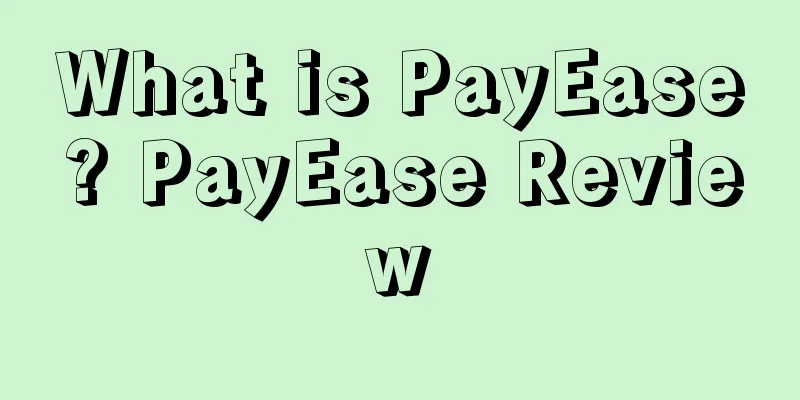|
People often choose to give up the best cooperation strategy based on their own interests, thus falling into a situation where their interests are damaged in the long run. ——The "Prisoner's Dilemma" explained by "Game Theory and Life" As the Christmas shopping season in Europe and the United States ends, cross-border sellers are coming to an end in their overseas journey in 2024. If one word is used to describe 2024, "prisoner's dilemma" seems to be more appropriate than the old-fashioned "involution". According to survey data, more than 60% of sellers will achieve revenue growth in 2024, of which 21% will increase by more than 50% compared with last year. However, more than 60% of sellers' net profit will decline compared with last year , of which 32% of sellers' net profit will even decline by more than 50%. The significant growth in revenue data contrasts sharply with the drastic reduction in profit margins, which to a large extent confirms a typical "prisoner's dilemma" that is becoming increasingly prominent in the industry: " If I don't lower my price, the orders will be snatched away by others with lower prices ." Under this Nash equilibrium thinking model, most sellers are being swept forward by the wave of excessively low-price competition. The price war after the excessive extension of the big promotion has most vividly demonstrated the "prisoner's dilemma" of cross-border e-commerce. Take Black Friday as an example: In the 1950s, when the name "Black Friday" was first coined, the shopping promotion on the platform lasted only one day. At that time, "Black Friday" could usually attract the attention of a large number of consumers in a short period of time, thus bringing sellers a grand carnival of explosive orders. But nowadays, the Black Friday activity cycle is getting longer and longer, often starting in October, with pre-launch, warm-up, official activities... The span can be as short as ten days and a half a month, or as long as nearly two months. Even Amazon, a leading e-commerce platform, set a record for its Black Friday network in 2024 - starting on November 21 and ending on December 2, a span of 12 days. During the long activity cycle, major e-commerce platforms launched a fierce discount war around price-performance ratio: Temu launched a series of promotional activities such as Black Friday pre-sale, up to 90% discount, vouchers, etc.; TikTokShop started a new way of direct discount subsidy, with a maximum subsidy of US$30 for a single product; Amazon launched a low-price mall, confronting Chinese overseas platforms head-on in terms of price-performance ratio... Behind the fierce product discount war on the platform, on the one hand, consumers are obviously experiencing consumption fatigue, their overall shopping considerations are becoming more rational, and their sensitivity to discounts is unprecedentedly high; on the other hand, sellers are caught in the "prisoner's dilemma" of excessive price competition.
According to Adobe Analytics, during the 2024 Black Friday in the United States, online sales of toys, electronic products and other categories increased by 622% and 334% compared with the daily average in October, but at the same time, the promotional discounts of these categories also reached a new peak, and product prices fell collectively. This means that many sellers' "explosive orders" are at the expense of some profits. How was the Pandora's box of excessive low-price competition in cross-border e-commerce opened step by step? The change in shopping demand caused by consumption downgrade is the first "trigger" mentioned. Data shows that the rise in US inflation began in 2021. In January of that year, the CPI was 1.4%, and it rose to 2% in March. Then it continued to break through for consecutive months, reaching a peak of 9.1% in September 2022... In November 2024, the US CPI increased by 2.7% year-on-year, an increase of 0.1 percentage point from October, and it is still on the rise. Affected by factors such as continued inflation, consumers are increasingly concerned about the cost-effectiveness of products. A survey by OnePoll shows that in 2024, 71% of American consumers said that they would consider price as the most important reference factor when shopping online, even more important than product quality (46%), and 53% said that they would only buy goods when they are discounted. Under the wave of cost-effective consumption, low prices have gradually become the dominant factor influencing shopping decisions , and have forced the cross-border e-commerce market to lower prices. The price comparison and price pressure from cross-border e-commerce platforms are another driving force behind the low-price trend . In the era of stock competition, the cost of acquiring customers for platforms is gradually increasing. In order to respond to changes in consumer demand, platforms regard "low price" as the first priority indicator. Traffic continues to tilt towards low prices, which further affects sellers. Putting aside the frequently updated pricing rules of Temu, which is famous for its low prices, let’s just talk about the leading US e-commerce platform - Amazon, which was also "caught" in the price vortex this year and launched the Haul Super Value Low Price Mall, officially joining the competition in the low-price market. From November 21 to December 2, Amazon's low-price mall offered a limited-time 50% discount on all items and placed discount banners in a prominent position on the app, driving a surge in mall sales. According to Marketplace Pulse data, the low-price mall reached its peak sales on Black Friday, with 2,700 best-selling items and ranked in the top 100 in multiple subcategories on Amazon. Huge discounts on purchases over a certain amount, automatic price following, refund only... In order to stimulate consumers' desire to spend, platforms have been implementing price reduction strategies one after another, and sellers on the platforms can only follow suit passively, and finally fall into this increasingly fierce low-price wave. It is worth mentioning that for the vast majority of small and medium-sized sellers, although the difficulty of making profits on cross-border e-commerce platforms is soaring , they still cannot leave these e-commerce platforms due to the platforms' huge user base and absolute market leading position. Therefore, choosing to lower prices becomes the only Nash equilibrium in this "prisoner's dilemma", although it is not the best outcome.Nash equilibrium refers to a situation in which each participant in a non-cooperative game chooses the optimal strategy when the opponent's strategy is given, so that no party can increase its own benefits by unilaterally changing the strategy. In March this year, after Amazon announced the addition of a new warehouse configuration fee, it launched a poll to ask sellers whether they would raise prices as a result. At that time, among the nearly 900 sellers surveyed, 68% of the sellers voted for "Reject internal competition, and raise prices from me", 23% chose to wait and see, and only 9% of the sellers firmly stated that they would not raise prices. But the actual situation afterwards was: most sellers reported that the discounts on products on the platform were getting bigger and the prices were getting lower. Whether it was Prime Day in July or Black Friday and Cyber Monday in November, the majority of sellers were those who “lost money to gain publicity.” According to a survey by , 56% of sellers’ sales during Black Friday doubled compared to normal days, but nearly 90% of sellers’ profits were lower than expected. This data means that sellers actually know that low-price internal circulation is not a long-term solution, but in the short term everyone can only continue to "compete for blood" : on the one hand, it is due to the platform's price comparison system, and on the other hand, when products lack unique value and are highly homogenized , they can only rely on low prices to create advantages and selling points. In the three-party relationship between buyers, platforms and sellers, cross-border sellers will not be the only losers in this "prisoner's dilemma". In the process of market development, price war is a common competitive strategy. Moderate price competition helps the overall profit of the industry to be reasonable, so that consumers can obtain high-quality and low-priced products or services, and sellers and platforms can also gain more consumers, more traffic and higher repurchase rates. But as the saying goes: you get what you pay for . Price reflects value, this is an eternal truth. Excessive low-price competition often puts the industry into a vicious cycle: the platform suppresses prices, sellers lower product prices in order to survive, the industry's overall profit margin declines, and when it reaches a point where "there is no further reduction", the "prisoners" trapped in the platform can only pass off inferior products as good ones , which ultimately affects consumers. A typical and realistic example is right in front of us: Temu, which is famous for its low prices, is also famous for its uneven product quality. On domestic and foreign social platforms, overseas consumers can be seen everywhere "buying and cursing" , and some consumers even bluntly asked: Is Temu sending defective products abroad? A Temu seller expressed his sincere opinion: it is not that the seller wants to send defective products abroad, but the platform forces the seller to send defective products. The seller took the product he sells as an example. His original product has good texture and appearance, but the platform took a product with similar style and asked him to match the price. The seller refused to match the price, so the platform restricted the stocking. In desperation, the seller could only reduce the cost of the product to meet the platform's shipping requirements. Further analysis shows that consumer perceptions may gradually be changed by the rampant "inferior products" , exacerbating the vicious competition of bad money driving out good money and trapping the industry in a "pseudo-low price" trap. Not only are cross-border sellers suffering, but the quality of platform products has repeatedly been exposed, and the reputation has further declined. When the economy picks up, the traffic may also decline sharply. Take mobile phone cases as an example. Mobile phone cases that can be purchased for less than $2 can be found everywhere on low-price platforms. Their appearance is almost exactly the same as that of more expensive mobile phone cases, but the actual use experience is very different. However, in the long run, consumers will think that the price of a mobile phone case with the same appearance should be $2, and another mobile phone case of good quality will lose its desire to buy because of its higher price, and gradually be squeezed out of the market. A senior seller believes that platforms such as Temu have thrived with low prices, and other platforms have followed suit due to industry trends. However, in essence, the chain reaction brought about by low prices runs counter to the original ecology of some platforms. In this case, it is only a matter of time before they turn around. In the era of stock market, the escalating competition among cross-border e-commerce platforms has intensified the prevalence of low-price competition, and sellers who are inseparable from the platforms have become "prisoners" in the dilemma of excessive low-price competition. In the long run, "price war" will never be the ultimate path for cross-border e-commerce. The key to solving this "prisoner's dilemma" lies in having a "strategy that can operate on its own", which for cross-border sellers means increasing product added value through innovation, creation, and branding , thus breaking out of the vicious circle of low prices. While going overseas is full of thorns and the road ahead is long, the other side of the coin is that Chinese sellers are still the most promising participants in cross-border e-commerce. This can be seen from the seller data released by the platform, as well as from the fact that major platforms are competing to recruit Chinese sellers this year. To get out of this "prisoner's dilemma" of excessively low prices, "Chinese sellers unite and stand up" may be another solution.
|










